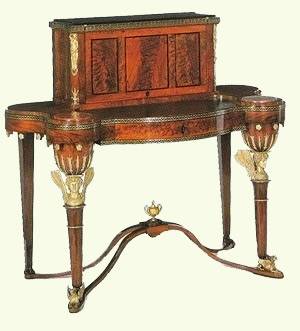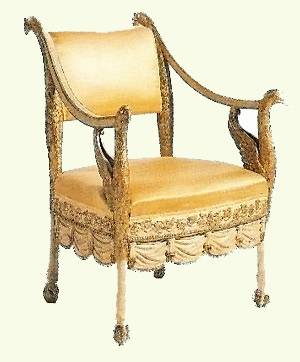Knowledge Center
Related Articles: Russian Furniture
1800-1810
Russian Furniture Styles - 1800-1810
This period is often referred to as “Russian Empire”. Heinrich Gambs developed a technique where the lower sides, frieze and upper parts are decorated with band of darker wood inlaid with perforated brass friezes of varying widths. Always applied to ebony, or ebonized wood, the friezes are composed of various motifs: lozenges, Greek key, and ogives. General characteristics were casolettes (perfume burners), curule chairs, sofas and seats with feet and arms in the form of eagles, griffins and sphinxes. Painted or lacquered and gilded wood and ordinary brass disappeared gradually, while the use of mahogany increased. It was adorned with brilliantly worked bronze figures, lyres, medusas heads, lions and even rams. Ornamental repertoire motifs of swans, crossed swords, shields, laurel wreaths, and cornucopias were also used.


Above top: A Russian bureau-jardiniere in mahogany, mahogany veneer, gilt and patinated bronze and brass with an embroidered panel, from the Heinrich Gambs workshop, 1805-1810 (Pavlosk Palace Museum)
Above bottom: A Russian armchair in carved, painted and gilded wood, c. 1800, characterstic of this transitional period.